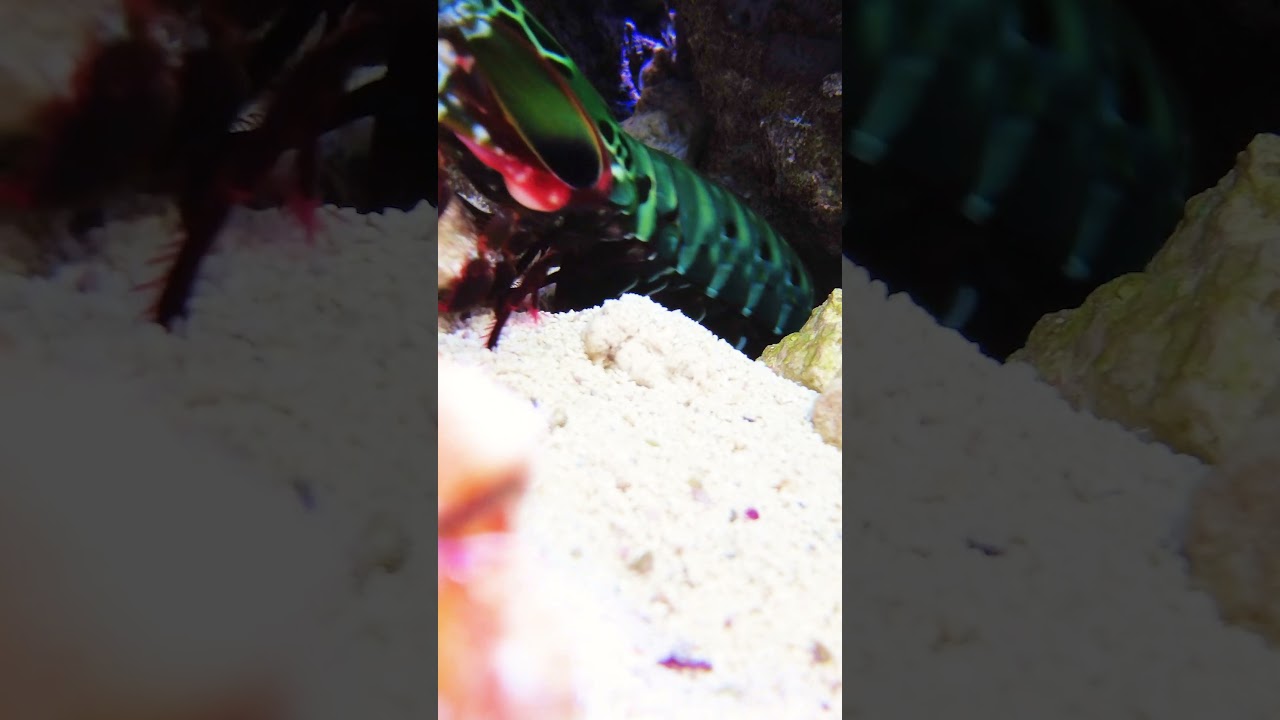-
Insight into the life and habitat of mantis shrimp, focusing on their engineering skills in home renovation.
-
Detailed explanation of how mantis shrimp create and maintain their burrows in aquatic ecosystems.
-
The role of mantis shrimp burrows in marine biodiversity and environmental stability.
-
Conservation significance of mantis shrimp and how protecting their habitats can aid broader environmental efforts.
- The interplay between behavior, anatomical adaptations, and the ecological impact of mantis shrimp’s activities.
The mantis shrimp, known scientifically as stomatopods, are small marine crustaceans notable for their vibrant colors and, more intriguingly, their formidable punching ability. However, beyond their physical prowess lies an impressive aspect of their behavior – the skillful renovation of their home environments. This article will take you through an exploration of the mantis shrimp’s natural DIY home improvement capabilities, their environmental importance, and the implications for conservation.
Mantis shrimp inhabit burrows within the soft sediment of marine environments. These burrows serve as sanctuaries that protect them from predators and a site for ambush hunting. The construction and maintenance of these burrows require remarkable engineering skills. Mantis shrimp are equipped with specialized appendages that allow them to excavate sand and reposition substrate efficiently. Their raptorial appendages, often compared to the speed and force of a bullet, enable them to pulverize rocky materials and manipulate their surroundings, ensuring a sturdy and secure living space. This practical approach to home building showcases an intrinsic understanding of their habitat, allowing them to reinforce the burrows to withstand ocean currents.
Beyond offering immediate physical security, mantis shrimp burrows hold ecological significance in marine biodiversity. These burrows modify the physical characteristics of the seafloor, enhancing habitat complexity. A varied substrate structure supports a diverse assemblage of marine organisms, from microorganisms to small fish, boosting local biodiversity. The increased surface area provided by mantis shrimp burrows allows foliage and algae to attach, thereby facilitating primary production. Moreover, these meticulous alterations in the marine environment play a crucial role in sediment turnover and oxygenation of the substrate, contributing vitally to nutrient cycling.
These industrious crustaceans also impact their surrounding areas through nutrient distribution. By bringing organic materials into their burrows, mantis shrimp unintentionally enrich the sediment. This process, known as bioturbation, improves sediment health and supports a thriving local ecosystem. Each indented patch in the ocean floor created by a mantis shrimp becomes a microhabitat teeming with life, contributing to the grand mosaic of marine diversity.
The conservation significance of mantis shrimp cannot be understated. Their presence is an ecological necessity for healthy marine environments. As ecosystem engineers, they play a non-negligible role in maintaining the intricate balance of the seafloor’s ecology. Preserving mantis shrimp and their habitats is crucial in enhancing broader environmental conservation efforts. With increasing threats from climate change, pollution, and overfishing impacting marine habitats, the protection of mantis shrimp homes becomes paramount. Safeguarding these dynamic organisms and their roles within ecosystems can support the resilience of broader marine habitats.
The anatomy and behavior of mantis shrimp are intricately connected with their environmental impact. Their complex vision allows them to detect subtle changes in their environment, guiding their burrow construction efforts. This interaction between anatomical adaptations and ecological functions underscores the mantis shrimp’s role as elite home renovators within their aquatic habitats. The study of their behavior offers insights into the sophistication of simple marine animals in manipulating their environment for survival and reproductive success.
Mantis shrimp are more than marvelous creatures due to their adaptive behaviors and ecological significance. By understanding how these crustaceans interact with their environment, we gain valuable insights into marine science and habitat restoration. Encouraging conservation efforts for mantis shrimp also supports initiatives for preserving broader marine systems, revealing the interconnectedness of life in aquatic ecosystems.
In summary, mantis shrimp represent a fascinating blend of biology, behavior, and environmental influence. Their home renovation skills offer more than mere survival benefits. They perform essential roles in marine ecology that contribute to biodiversity and ecosystem productivity. Protecting these industrious crustaceans is a crucial step in global habitat conservation, reinforcing the delicate balance sustaining underwater life. Embracing the ecological importance of mantis shrimp and acting upon this understanding is vital to ensuring the health of our marine environments.
*****
Source Description
The peacock mantis shrimp is a bright, rainbow-hued animal. Every morning this tiny resident does some “touch ups” to prepare for the day. Come see this colorful critter in our Tropical Diver exhibit!


